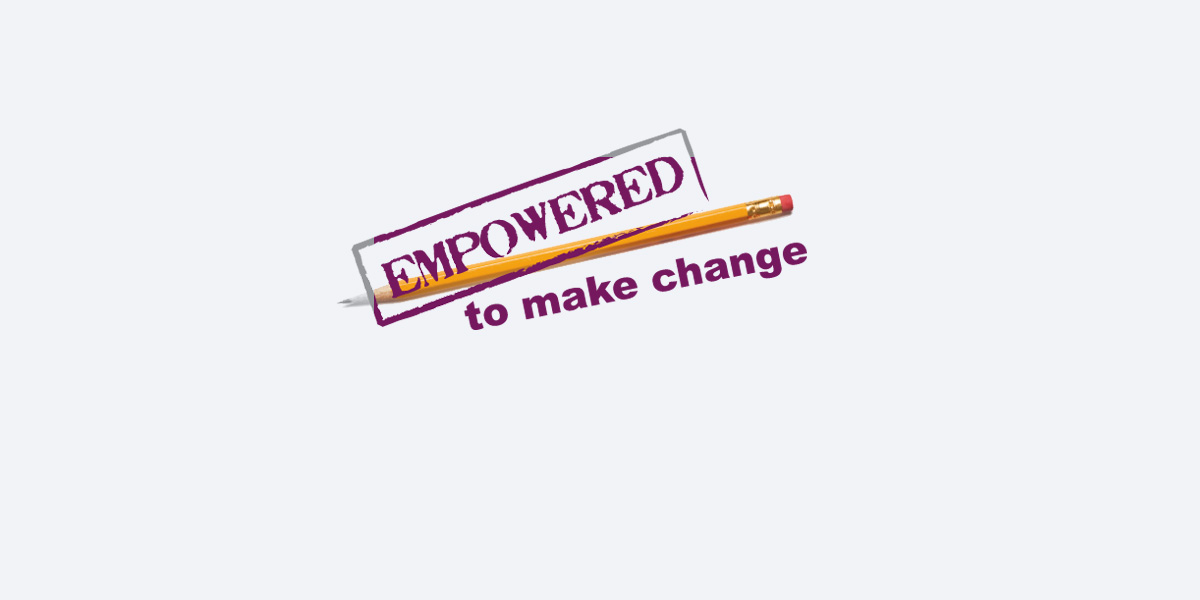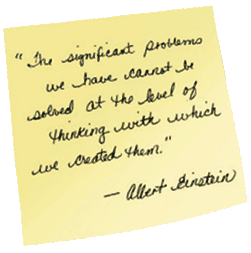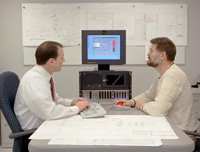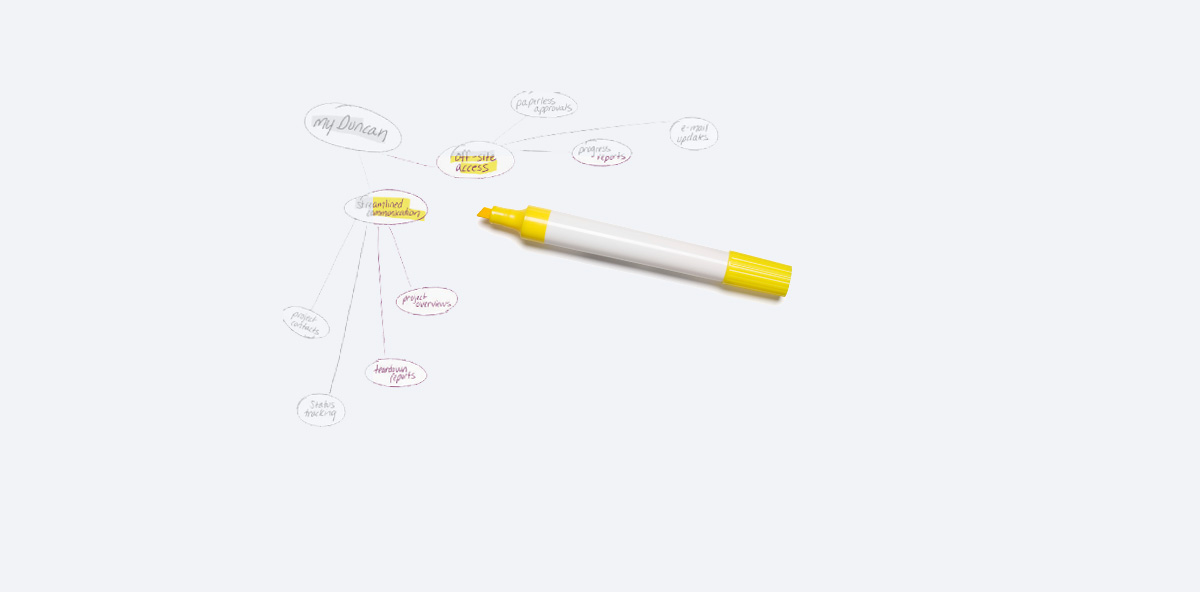"MYDUNCAN GIVES ME THE ABILITY TO KNOW EXACTLY, UNCUT, THE STATUS OF MY PROJECT WITHOUT CONSTANTLY HAVING TO BABYSIT."
– Danny Langford,
Vice President of the Customer Service with Avjet Corporation


Through observation, experimentation and perseverance, humans have managed to solve a whole array of perplexing problems. These solutions have included incredible inventions like the parachute, periscope, suspension bridge and many more. Most inventions are inspired by a need, the need to travel, to go faster, higher or further or the need to just make life easier and more efficient. For decades, Duncan Aviation has been on the cutting edge of business aviation needs. This has been made possible because of the innovative culture embedded at the very heart of the company.
From the beginning, Donald and Robert Duncan believed that if you take care of employees, employees will take care of customers. This belief empowers employees to perform their jobs with an eye towards innovation. If they discover more efficient ways to work without compromising quality or customer satisfaction, they are free to develop the technique. If it proves itself, it could become standard operating procedure.
While working in the Duncan Aviation Research and Development (R&D) department, Rich Teel had that eye for innovation. He designed and developed test equipment that accurately put components and instruments through comprehensive testing using the most advanced technology at the time. Although the test equipment was on the cutting edge, the processes and procedures in place to handle the ever-increasing work flow were not. The current process and procedures in place consisted of a wall was dedicated to a calendar whiteboard dotted with small wooden blocks that coordinated with scheduled work for Duncan Aviation’s Avionics and Instruments department. Each instrument was assigned a red folder that followed it through the work process. Whoever had the red folder was the owner of the project and the keeper of the information. This required a lot of paperwork and legwork from everyone to locate the red folder, find the current status of each project, communicate with the customer and then pass their needs back to technicians at the bench.
In 1994, Rich became manager of the R&D and calibrations department and was faced with how to manage the department’s work flow. Frustrated with daily paper copies of in-house work and not wanting to use the whiteboard and red folder system, Rich believed there was a better way.
“I felt it was an inefficient way of doing things considering the available technology,” he says. Being knowledgeable about client-server technology, he set out to design a program that was simple, efficient, user-friendly and that would do everything he needed. Over the course of a couple of weekends, he filled a notebook with his ideas. He even imagined what it might look like and created screen designs in pencil. “As I was designing it, I knew we needed this. We needed this not only for our department, but I believed it would benefit other areas at Duncan Aviation, too. I knew the types of challenges other departments faced. If it worked for us, it would work for them.
”Rich called upon the skill of Ed Gilmore, an R&D engineer, to write the initial prototype for his vision. After a few edits and trials, customer account representatives (CARs) test drove this new way of managing work flow. For the first time, it gave them an interactive, user-friendly tool that was easy to learn. Brian Zitek, one of the initial CARs to have access to this new technology, experienced first-hand the impact the new program had on his ability to better serve customers and drive sales forward.
“It provided a work flow management and communication tool that improved the speed at which we could deliver accurate information to customers, and their wishes back to technicians during the repair process,” Brian says. “The advent of this software not only reduced the amount of paperwork required, it completely revised the way we interfaced with customers.”

Rich Teal, Manager of Research & Development, and Ed Gilmore, Research & Development Engineer, works on an initial prototype for Customer Account Representatives.
The customer advantages and department efficiencies experienced by the calibrations department were recognized by Duncan Aviation’s senior management and soon the seed project in the R&D Calibration department was handed over to the Information Technology (IT) department for further development for the entire company. Ed Gilmore transferred to IT as a programmer analyst and led the project to expand the program and later to port it to AS400 for Windows. This moved Duncan Aviation to the forefront of the business aviation industry by providing a superior aviation experience with competent, comprehensive and responsive customer service. Added enhancements created a more efficient work order system, a cleaner billing process for customers and allowed Duncan Aviation to enter the Electronic Sign Off /paperless environment. The development of this software is one of many examples demonstrating how Duncan Aviation employees strive to stay at the front of business aviation, providing innovative, responsive and revolutionary customer service.
Innovative technology has a ripple effect that doesn’t end when a project is over. Today’s fresh new ideas become the foundation and infrastructure for tomorrow’s next big thing. This natural evolution allows those who are willing, the ability to think creatively and find the next step.
Duncan Aviation Project Manager Ryan Oestmann enjoys being on the floor and engaged with teams, listening to success stories, working through issues and making sure teams have what they need to keep moving forward. He equally enjoys meeting with customers, providing progress reports, working squawks and shaking hands when he delivers “keys” at the completion of a project.
"MYDUNCAN GIVES ME THE ABILITY TO KNOW EXACTLY, UNCUT, THE STATUS OF MY PROJECT WITHOUT CONSTANTLY HAVING TO BABYSIT."
– Danny Langford,
Vice President of the Customer Service with Avjet Corporation
Ryan stays connected and provides added support to customers when they are not physically present through a daily progress report e-mail. Although this extra step kept customers connected and informed, Ryan still relied on fax machines to gain customer approvals on squawks and open issues. This often slowed productivity, especially if customers were away from their offices, in a different time zone/continent or that much-needed squawk fax accidentally walked away with someone else’s paperwork. He spent more time at his computer and monitoring the fax machine than interacting with teams and customers. Ryan knew there was a better way and found his inspiration while driving down the back nine on the Pioneers Park Golf Course in Lincoln, Nebraska, with Danny Langford, Vice President of Customer Service with Avjet Corporation and one of Ryan’s customers. Ryan asked Danny what Duncan Aviation needed to do to make his experience a better one and Danny shared ideas from a customer’s perspective. The number of strokes on Hole 14 didn’t seem to matter as much as the conversation because in the end, neither of them remembered the score. But after the last putt, Ryan walked off the green with a fresh idea that would take Duncan Aviation to the next level in technology and customer interaction.
Until this time, business aviation maintenance facilities, including Duncan Aviation, had not taken full advantage of the Internet to interact with customers. Ryan proposed providing an interactive online customer portal they could access and gain information specific to their projects in-house at either of Duncan Aviation’s full-service maintenance facilities. Recognizing that Duncan Aviation needed to develop a more web-based presence, Ryan was given the green light to proceed. But the success of this project depended on more than the vision of just one person. A team of Duncan Aviation employees were brought together and were given only one direction—make it happen.

Duncan Aviation Customer Service Manager Chad Doehring, along with project managers Darrell Miller and Traci Hein, joined Ryan to define how they wanted this new tool to work. Having a direct connection to customers, each began asking them what they would like to see and how they would use an online tool. What this team quickly found was that customers experienced the same frustrations and wanted the same things project managers did: the freedom to continue to be productive in other areas while an aircraft was scheduled in for maintenance, reduce or eliminate the need to have a representative on-site all the time during major inspections and the flexibility to walk away from the fax machine. Armed with this information, they came up with a plan for an online tool that would allow customers to roll out of bed in the morning, check and approve squawks or open issues before breakfast, take a shower, drink a cup of coffee, then go to work and see what was accomplished since they checked earlier. If this could be developed, project managers would be connected to customers at any time and still have the ability to effectively interact with the teams on the floor, providing them with information needed to stay productive. Customers would have a new avenue to gain progress reports and communicate needs to their project managers. The impact of this tool on business aviation would be huge.

Ryan Oestmann, Duncan Aviation Project Manager and Richard Redman, D.O.M. for Janus Equities, viewing myDuncan's online approval system.
In order to bring this vision to life, two Duncan Aviation programmer analysts and a web content designer were brought on board. Ryan DeVall, Todd Mylander and Sarah Naeher listened and learned how each project manager worked and what customers were demanding. But rather than just duplicating the manual processes exactly as they currently existed and putting them online, they worked closely together to streamline activities and create a more efficient process and then came back to the table with ideas of how to make it better. Everyone on the team was given the freedom to offer comments and suggestions and the space to voice opinions. This non-threatening environment allowed for honest critiques and giant strides toward their goal. Over the next nine months, this continuous volley of ideas, along with a healthy chunk of humor, launched an online tool pretty close to the original concept. This new interactive portal gives customers a sense of ownership in the project and was named myDuncan. Each customer with a current open work order can be given access to their own myDuncan account through the myDuncan.aero website.
Project managers were anxious to have this new tool and immediately began asking customers to give it a go. Some customers were hesitant to start something new after conducting business the same way for so long. Soon, word-of-mouth spread and Duncan Aviation customers began talking to other operators telling and showing them their personal myDuncan.aero accounts. Having already heard about myDuncan.aero, new customers began requesting accounts as soon as maintenance events were scheduled. Operators became better served, more informed and smarter, just by being a Duncan Aviation customer. Some began asking for this service from other service providers; few have provided it.
In September of 2006, the initial launch of myDuncan.aero allowed online item approvals for outstanding issues and squawks during open work orders for airframe maintenance events. Recent enhancements have allowed Duncan Aviation’s Component Solutions area to offer the same level of service and online access to customers sending in parts, components and instruments for repair and overhaul. Scheduled to be released by the end of 2008, customers will be able to view photos to go along with squawk descriptions. Goals in the future are to provide real-time billing so customers can manage the financials of their projects. The possibilities are practically limitless.
Although Ryan still spends time sitting at his desk answering e-mails and fielding phone calls from customers, you won’t find him near the fax machine. He’s walking the hangar floor, connecting with mechanics and being proactive for his customers. He still shakes their hands when the project is over.
Through observation, experimentation and perseverance, Duncan Aviation employees have solved an array of perplexing problems changing the face of the company and impacting the entire business aviation industry. These changes come only when a person or a team is allowed to think and work with an eye towards innovation and is given the freedom and flexibility to make things happen. Duncan Aviation Chairman Todd Duncan still believes in his grandfather’s philosophy of empowering team members. “If we take care of our team members,” he says, “equip them to be successful and empower them to make change, they will take care of customers and provide futures for themselves.”